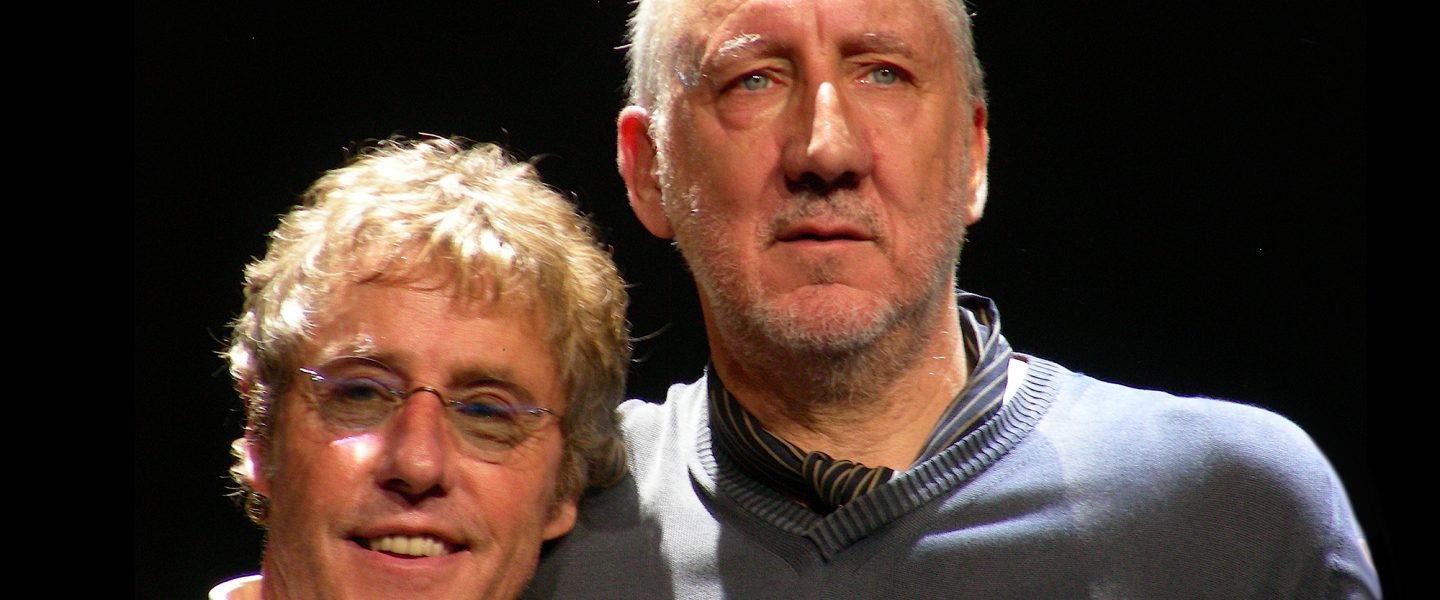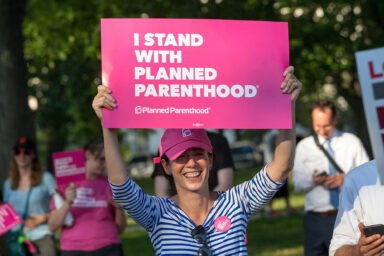Quantifying the shrinking concert experience.
|
Listen To This Story
|
Currently The Who is on tour, but as I see it, it’s only half of The Who. When Keith Moon died in 1978, I was sure that was the end of the band, but they kept going with Kenney Jones on drums. But then their bassist John Entwistle kicked off in 2002 — and they still kept going, just replacing him with some random bass player.
I’ve seen this 50 percent of The Who (featuring Pete Townshend and Roger Daltrey) twice. Does that mean I’ve seen 100 percent of The Who? Clearly not, because it’s the same half. But have I actually seen more than half? Do Townshend (songwriter/guitarist) and Daltrey (singer) add up to more than the sum of their parts?
Arguably you could replace a bass player and a drummer, and with the original singer and guitarist the band will pretty much sound as they originally did.
When and if the Gallagher brothers ever bury the hatchet (hopefully in cement) and reform Oasis, will they need to call Bonehead, Paul McGuigan, and Alan White? Or will they just go The Who route and be satisfied with the original songwriter/guitarist and singer? Even with just those two members, you’re hardly seeing only 40 percent of the original five-member band; they could have prerecorded the other parts and stick mannequins on stage, and I don’t think many people would mind.
How do you quantify these shrinking bands? It’s a fair question, because various permutations of them have been touring for some time now, and every year, more original members go off to meet their Melody Maker in the sky.
A lot of these old geezers are seriously old geezers.
David Crosby died in February at the age of 81. I saw Crosby, Stills & Nash (i.e., 75 percent of Crosby, Stills, Nash & Young) a couple of times, as well as Crosby and Nash (50 percent), and Stephen Stills (25 percent), once each. As we’ve determined, that doesn’t mean I’ve seen 225 percent of Crosby, Stills, Nash & Young, and with Crosby now dead, it’s going to be harder — well, impossible now — to get up to 100 percent.
Are Stills and Nash even talking? Crosby had already alienated everyone else long before he died, but is Young still talking to Stills? Is Nash okay with Young? Will there ever be a Stills, Nash and Young tour? What would that even sound like? I’ve heard the three-part harmony of Crosby, Stills & Nash. But Stills, Nash and Young have never toured together without Crosby. Would it be two-part plus one-part harmony?

I used to think I’d seen 75 percent of the Beatles because I once saw George Harrison in concert, and then one of the three times I saw Paul McCartney, Ringo joined him on stage for the last few numbers. But of course without John Lennon you’re missing more than a quarter. My cousin, who saw 100 percent of the Beatles in 1965, said the operative word was “saw,” because you couldn’t actually hear them for all the screaming.
The Pretenders are currently on tour, with 50 percent of their original line-up (half the band died of drug-related causes in the early 1980s). Singer/songwriter/guitarist Chrissie Hynde is obviously the heart and soul of the band, but she often tours with original drummer Martin Chambers. When she doesn’t, it’s just her and random musicians. Is that still the Pretenders? Why doesn’t she just tour as Chrissie Hynde? Presumably she just likes the name the Pretenders, and that’s how all her albums have been released.
When Mark E. Smith was chided for constantly changing his line-up, he retorted, “If it’s me and yer granny on bongos, it’s The Fall.”
Some would say at least Led Zeppelin had the dignity to break up when their drummer John Bonham died in 1980. Their one concert reunion in 2007 (I tried to get a ticket) featured Bonham’s son Jason Bonham on drums, so at least they had some original DNA on board.
The death of guitarist/singer Jerry Garcia in 1995 tolled the end of the Grateful Dead, but they’ve continued touring in various permutations, featuring three or four of the original band, calling themselves the Other Ones, the Dead, and finally Dead & Company. This seems a fair compromise, acknowledging their past without passing themselves off as the original deal.
Deadheads have traditionally been so doctrinaire that back in 1976 when I told a friend I was going to see the band at the Boston Music Hall, he scoffed, “I wouldn’t bother to see them now. If you didn’t catch them by 1972, you really haven’t seen the Dead.”
There are probably Syd Barrett disciples who would claim Pink Floyd haven’t been worth their salt since their founder went buggo and left the band in 1968. This was of course before Dark Side of the Moon, Wish You Were Here, and The Wall.
Doubtless you can find Fleetwood Mac purists who preferred the group in their British blues heyday, before they added Lindsey Buckingham and Stevie Nicks and released such disappointments as Fleetwood Mac and Rumours (combined sales: 47 million).
Was Genesis all downhill after Peter Gabriel left in 1975? It was certainly a different band, moving from prog rock to pop rock, and shedding additional members. One of their albums was called And Then There Were Three. It was as a trio that they finally went multi-platinum.
Yes has recently been touring with only a single member of their original line-up (guitarist Steve Howe), and Chicago’s latest incarnation has only three of the original seven members, and none of the principal singers.
Blur and U2 are two bands that have never altered their four-man teams, but Jethro Tull, Megadeth, Soul Asylum, the Beach Boys, the Cure, AC/DC, Anthrax, Boston, Lynyrd Skynyrd, Chic, Foreigner, Iron Maiden, Judas Priest, and Deep Purple have all toured with just a single original member.
Carl Palmer is the only extant member of Emerson, Lake & Palmer, but he keeps touring as ELP. Don Henley is the last of the Eagles, Bill Payne is the only touring Little Feat, Evan Dando is the final Lemonhead, Ralf Hütter the only piece of Kraftwerk, Robert Fripp the sole royal left in King Crimson.
And then there’s ABBA Voyage, a concert with precisely zero members of the band, just virtual avatars (inevitably dubbed “ABBAtars”) lip-syncing to the real voices. It’s such a success in a purpose-built venue in East London (an ABBAtoir?) that other cities are considering featuring their own zero-percent ABBA phenomenon.
Does it matter? Is this the solution to the shrinking and dying of bands? Elvis Presley has been touring as nothing more than a video with a live orchestra for years, and the late Tupac Shakur (who was gunned down in 1996) performed as a hologram at the Coachella Festival in 2012.
But why stop at Elvis, Tupac, and ABBA? Why not bring back the Beatles for a series of rooftop concerts (so you can hear them this time)? Why not George Gershwin performing “Rhapsody in Blue” live at Carnegie Hall? How about summoning up an AI-generated Frank Sinatra or a pixelated Jenny Lind (1820-1887) to sing a selection of her Victorian hits?
Is this what we all demand? With ticket prices stretching into the four figures for concerts featuring only a single original member, why not give the audience what they really want: the original musicians, in their prime, together again? It would be 100 percent of the band forever — performed by exactly no one.
—
J.B. Miller is an American writer living in England, and is the author of My Life in Action Painting and The Satanic Nurses and Other Literary Parodies.




